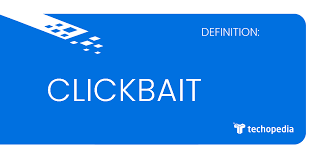In today’s online world, it’s about getting people to click on your clickbait website. And for many website owners, the best way to do this is by using catchy headlines and descriptions that draw in readers. But is this the best way to get people to stay on your site?
What is Clickbait?
Clickbait is a type of advertising that uses provocative headlines and images to lure readers into clicking on links. The purpose of clickbait is usually to generate website visits and online subscribers rather than to provide valuable information. These websites often use misleading titles and images to make it seem as if the article or video they are promoting is something it’s not.
Some examples of clickbait websites are BuzzFeed’s “19 Weird But True Facts About Dogs You Didn’t Know”, Vice’s “This Is How Much Money You Could Make If You Quit Your Job Right Now”, and Upworthy’s “The Most Horrifying Thing To Happen To A Cat In 36 Years”.
The widespread use of clickbait has caused some negative consequences for both users and the internet. Clickbait sites are often slow and crash, causing people to lose their data or wait long for pages to load. They also contribute to the spread of misinformation and fake news because people visiting these websites often don’t research before clicking on links. Lastly, click
The Negative Consequences of Clickbait Websites
Nearly every website has a blog section, but not all blogs are created equal. Websites that focus on clickbait or sensational headlines designed to get you to click on the link often have negative consequences.
The primary problem with clickbait websites is that they create an expectation in their readers’ minds that is rarely met. When you read a headline that promises a shocking revelation about something (like the latest celebrity divorce), you tend to expect something more dramatic than what you get. This can be frustrating because enjoying an article is impossible if you’re always waiting for the punch line.
This disappointment can sometimes lead people to boycott the website entirely. For example, after reading one too many headlines about how easy it is to make money online, some people decided to refrain from investing in a legitimate online business. They lost out on potential profits and were discouraged from starting their own companies altogether.
Other people fall prey to the trap of thinking that anything posted on a clickbait website must be true. They stop checking sources and end up believing everything they read, even if
The Truth About Clickbait Ads
There’s a dangerous truth behind some of the most popular clickbait websites: many are built on sneaky ad tricks and manipulation.
For example, one common technique is to place an ad together with a trigger phrase (like “see the hidden photos!”), then track how often people click on the ad or text. If people click on the ad more than once, the website owner can claim that it was successful and get paid.
But this kind of advertising isn’t just misleading – it can also be dangerous. For example, if someone clicks on an ad that takes them to a fake security website, they could give away personal information or pay to download malware.
So what can you do to avoid being deceived by these websites? Here are four tips:
1. Check the website’s review ratings before clicking any ads or links. If the site has a low rating, it’s probably because people have reported problems with it.
2. Use a browser extension like AdBlock Plus to block ads and trackers from loading on websites.
3. Follow online safety guidelines like never sharing your personal information online and always checking the URL before clicking anything
How to Avoid Being Victimized by Clickbait Websites
Clickbait websites are designed to reel unsuspecting readers with headlines that promise a hidden treasure or secret information, only to deliver a disappointing or even dangerous product. While some sites are simply trying to get you to spend your money, others may be deliberately deceptive to generate traffic and sell advertising.
If you’re thinking of clicking on a headline that seems too good to be true, here are five tips for avoiding being misl:
1. Check the source. Make sure the website you’re visiting is reputable before clicking any links. If you can’t find an independent source for the information, avoid the article altogether.
2. Only believe some of what you read. As tempting as it may be, you only sometimes trust everything you see online. Websites might trick you by including fake testimonials or images that look genuine but contain misleading information.
3. Beware of untrustworthy ads. Ads on clickbait websites may seem helpful but may not be what they seem. Be especially careful if the ad offers a free trial or discount before requiring you to
Conclusion
There’s a lot of talk about clickbait these days- but what exactly is it? Clickbait is usually defined as an article or video clip that employs sensationalized headlines and exaggerated claims to lure in readers. While some people may find these articles entertaining, the reality is that they’re often full of misleading information and tricks to get you to spend your money. If you’re looking for quality content, steer clear of clickbait websites- they’ll only cheat you out of the information you need to make informed decisions.
